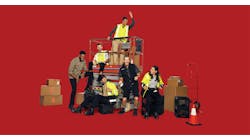In the Joseph Heller book, Catch-22, you couldn’t see the Major unless he wasn’t in.
Employee training is the catch-22 of 2018. Between the pressure to perform and the limited resources, it seems like you are damned if you do train and double-damned if you don’t.
Many organizations fall into one of the two main traps:
- Trap 1 - Your plant or facility is busy; you have the money for training but no time.
- Trap 2 - You are busy, but it’s manageable. However, the company is not doing so well. You would have the time but there has been a thinning of the ranks and no money.
In both cases, the pressure for higher productivity is on. Every article you read (if you use your own time to read them) says the rate of change in business is increasing and we, as a nation, are falling behind in skills and knowledge.
There are whole new worlds like industrial internet, drones, sensors that you think you could use but there is no time to learn how to use them.
A look at conventional training
You and your team are too busy to get away for multi-day off-site training.
In fact, in some shops it is difficult to take anyone away, even for the most essential training. The idea of getting everyone on the same page at the same time - like when you update to a radically new version of your computerized maintenance management system (CMMS) - is just a dream – or, more accurately, a nightmare.
In addition to comprehensive and thorough training completed in a timely fashion, time out of the shop can be an issue. For off-site training courses there might be a travel day there and a travel day home. Of course, maintenance and reliability types have no problem leaving at 4 AM to drive for a 9 AM class only to drive home right after the class. This might be efficient from a cost perspective but it compromises learning, safety and next-day productivity.
While there are times when off-site training is necessary, can the technology that drives our changing industry otherwise help solve the problem that it originally helped create?
Addressing the needs of different competency levels
Another issue is that different people have different holes in their competency. Some holes in competency level can be based on experience, while others might be generational.
One example of different competencies comes from when I was having work done on my house. I had a plumber over to look at a problem. He was the current head of a fourth generation family business of plumbers that went back to his grandfather (his son was on track to take over the business afterward). He was 55 but had 45 years on the tools, because his grandfather took him out to job sites even when he was a boy.
He diagnosed the issue and gave me two solutions, with all the potential complications of each, in about a minute. But, when it came to an electronic issue with another system, he was on thinner ice. His son was completely comfortable with the electronics.
When it comes to maintenance shop personnel training, there is nothing more efficient than computer- or web-based training for specific competencies. For instance, if you want the whole team to fill out work orders the same way, a predesigned computer- or web-based class can be completed online to cover basics, followed by some one-on-one coaching to cover details, questions and to help people build a positive attitude.
For big-picture training like reliability leadership, planning and scheduling, or techniques for reliability design, there is a need to literally get away, chew over the material and discuss it with peers. This is where slower/comprehensive training with case studies and problem solving really makes a difference.
What does this mean for training?
As a leader, you need to think through the kind of competency you need.
If you are looking for training in Allen Bradley controls, for instance, an hour-per-day online course for two weeks may be more effective than an off-site two-day class.
On the other hand, if you are advancing someone from the tools and repair to planning or supervision, consider letting the employee get away and interact with their peers. Let them complete the training in a restful and supportive manner.
We can make the most of our scarce time and scarce funds by picking the right training, for the right people, at the best time.



